This essay is a flashlight.
It won’t walk the path for you — but it will help you see where to step.
You, the reader?
You’re the traveler. Maybe unsure. Maybe curious. Maybe just tired of bumping into the same old explanations that never quite stick.
Okay, okay. Let’s pause here.
Was that a poem? A riddle? A creative writing experiment?
Not exactly.
What you just read were metaphor examples — a fun and powerful way to describe something by comparing it to something else.
And that’s exactly what we’re covering in this blog.
We’ll explore what metaphors really are, how students can use them, famous metaphors in literature, how metaphors compare to similes, and 20 creative metaphor examples, broken down by theme.
So if metaphors have ever confused you, bored you, or just felt out of reach — this is your guide.
Let’s dive in.
What Is a Metaphor?
The word metaphor comes from an old Greek word—metaphora—which means “to carry over” or “to transfer.”
That’s what a metaphor does—it transfers meaning from one thing to another so we can see it differently.
A metaphor is a way of comparing two unrelated things, without using words like “as” or “like.”


Never Worry About AI Detecting Your Texts Again. Undetectable AI Can Help You:
- Make your AI assisted writing appear human-like.
- Bypass all major AI detection tools with just one click.
- Use AI safely and confidently in school and work.
Look at this simile and metaphor example,
- Simile = He’s as busy as a bee,
- Metaphor = He’s a machine.
We know he’s not really a machine. But the picture it paints, that he works without stopping, conveys the meaning.
Every metaphor has two parts:
The tenor → what you’re talking about.
The vehicle → what you’re comparing it to.
So if I say “My heart is a locked door,”
The heart = tenor,
The locked door = vehicle.
Metaphors work because our brains are wired to think in them.
According to cognitive scientists George Lakoff and Mark Johnson, we use “conceptual metaphors” all the time without noticing:
- Time is money (“I spent hours on that.”)
- Arguments are war (“She shot down my point.”)
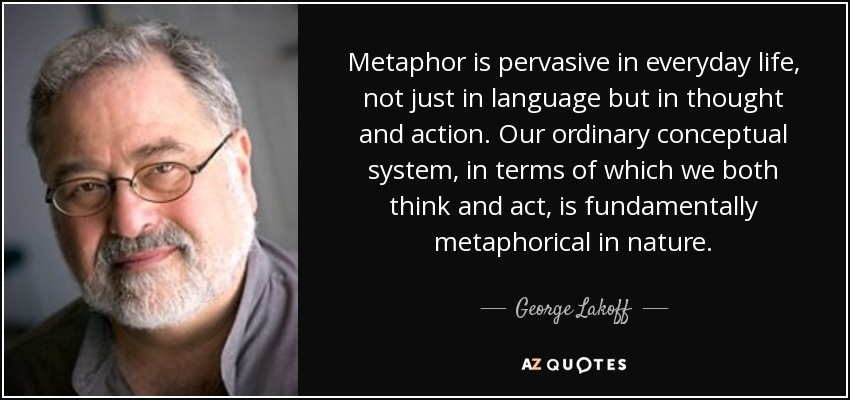
Source = Azquotes
We don’t just speak in metaphors—we use them to understand abstract things through more familiar ones.
Common Metaphor Examples (With Meanings)
We use metaphors every day, even without noticing.
A classic example of metaphor is, “Time is money,” which means time is valuable—something you can spend, waste, or save.
Another common example is: “Life is a journey.”
It helps us understand life as something with a path, twists, stops, and maybe even a destination.
And when life gets hard, we say things like “I hit a roadblock” or “I’m at a crossroads”—because deep down, we picture life as a road we’re walking.
Some metaphors are almost universal. Across many languages and cultures, people say things like “I carry a heavy heart” or “He exploded with anger.”
The words may change, but the feelings don’t. Let’s look some of the examples of metaphors:
1. Emotional States
- Drowning in sorrow – Feeling so sad it’s like you’re underwater and can’t breathe.
- Frozen with fear – So scared that your body feels like it can’t move, like ice.
- Carrying emotional baggage – Holding on to past pain or trauma, like it’s heavy luggage you drag everywhere.
2. Success & Failure
- Climbing the corporate ladder – Moving up in your job or career step by step.
- Falling flat on your face – Failing badly or embarrassingly.
- Breaking through the glass ceiling – Achieving success in a space where people like you weren’t expected to succeed (often used for women or minorities).
3. Relationships
- She’s my anchor – Someone who keeps you steady and grounded during tough times.
- We’re on the same wavelength – You think and feel the same way, like tuned-in radios.
- Their love is a battlefield – Constant arguments and emotional conflict in the relationship.
Some metaphors even have deep roots.
Take the phrase “Achilles’ heel.” It comes from an old Greek myth about a warrior named Achilles.
He was invincible—nothing could harm him—except for one small spot: his heel. That tiny weakness led to his downfall.
So today, when we say someone has an Achilles’ heel, we don’t mean a literal heel.
We mean they have one hidden weakness that could bring them down.
20 Creative Metaphor Examples in Writing
Let’s look at 20 creative examples of metaphors in writing.
Nature-Based Metaphors
1. His mind was a tornado.
→ Meaning: His thoughts were all over the place, out of control.
2. She bloomed after the move.
→ Meaning: She grew and thrived in her new life.
3. Their silence was a frozen lake.
→ Meaning: Things were tense and nothing was being said.
4. Their idea took root in his heart.
→ Meaning: The thought stayed with him and began to grow over time.
5. Her anger was a forest fire.
→ Meaning: Her anger was fast, fierce, and hard to control.
Technology Metaphors
6. My brain just crashed.
→ Meaning: You feel mentally overloaded or exhausted.
7. He’s wired differently.
→ Meaning: He thinks or feels in a unique way.
8. She rebooted her life.
→ Meaning: She started over, made big changes.
9. Their friendship has a weak signal.
→ Meaning: The relationship is fading or unstable.
10. He downloaded courage from somewhere.
→ Meaning: He suddenly found bravery, even if he didn’t know how.
Body / Physical Metaphors
11. She carried the weight of the world.
→ Meaning: She felt responsible for everything and everyone.
12. His heart was a locked door.
→ Meaning: He didn’t let anyone in emotionally.
13. She had a sharp tongue.
→ Meaning: Her words were mean or harsh.
14. He broke under pressure.
→ Meaning: Stress caused him to give up or collapse.
15. They were the backbone of the team.
→ Meaning: They gave strength and support to everyone.
Abstract Concept Metaphors
16. Hope is a candle in the dark.
→ Meaning: Even a little bit of hope can make hard times feel bearable.
17. Fear crept in like fog.
→ Meaning: Fear arrived quietly and filled everything.
18. Time is a thief.
→ Meaning: Time takes away moments, youth, and chances.
19. Truth is a double-edged sword.
→ Meaning: Truth can help or hurt, depending on how it’s used.
20. Her words painted a picture.
→ Meaning: She described something so well that others could imagine it clearly.
Metaphors in Literature

Here are five famous metaphor examples in literature:
1. “Juliet is the sun.” – William Shakespeare
From Romeo and Juliet
- What it means: She brings light, warmth, and life to Romeo’s world.
- Context: Romeo says this when he’s looking at Juliet on her balcony. He’s in awe. She’s become the center of his world.
- Why it matters: Shakespeare could’ve said, “I really like Juliet.” But calling her the sun makes it feel huge and unforgettable.
- Historical note: In Shakespeare’s time, people believed the sun gave everything life. So this metaphor meant even more back then.
2. “Hope is the thing with feathers.” – Emily Dickinson
From her poem Hope is the thing with feathers
What it means: Hope is small and gentle but stays strong—even in hard times.
Context: The whole poem talks about how hope sings softly inside us, even when storms come.
Why she used it: A bird feels fragile, but it can fly and survive storms. This makes the metaphor both tender and strong.
Why it works: Instead of saying “Hope helps us,” she gives us a picture of it—soft, quiet, and brave.
3. “Big Brother is watching you.” – George Orwell
From 1984
What it means: The government is always spying on you.
Context: In Orwell’s world, people live under constant control. The phrase “Big Brother” stands for power that watches, judges, and punishes.
Why it hits hard: “The government is spying on you” sounds flat. But “Big Brother” feels personal.
Historical note: Orwell wrote this after seeing how governments in the 1940s controlled people using fear and propaganda.
4. “I’m a riddle in nine syllables.” – Sylvia Plath
From her poem Metaphors (about pregnancy)
What it means: She’s pregnant for nine months and feels like a puzzle—full of change and mystery.
Context: The whole poem is about how pregnancy transforms a woman.
Why it matters: Plath could’ve said, “I feel strange during pregnancy.” But calling herself a riddle makes us pause and think about all the layers involved—body, identity, motherhood.
Why it works: We don’t just understand her—we feel the strangeness with her.
5. “The mind is a guesthouse.” – Rumi
From a poem in Persian Sufi tradition
What it means: Thoughts and feelings come and go like visitors—you should welcome them, not fight them.
Context: Rumi’s poems teach spiritual peace. This one says to accept all emotions, even painful ones, as part of being human.
Why it matters: If he said “Don’t get mad about being sad,” we might ignore it. But a guesthouse gives us a calm, gentle image we can remember.
Cultural note: Rumi’s work is part of Islamic Sufi tradition, which uses metaphor to express deep spiritual truths. His words are still shared worldwide.
If you’re finding literature challenging, you can use AI to help.
Let’s analyze literary metaphors using AI Chat.
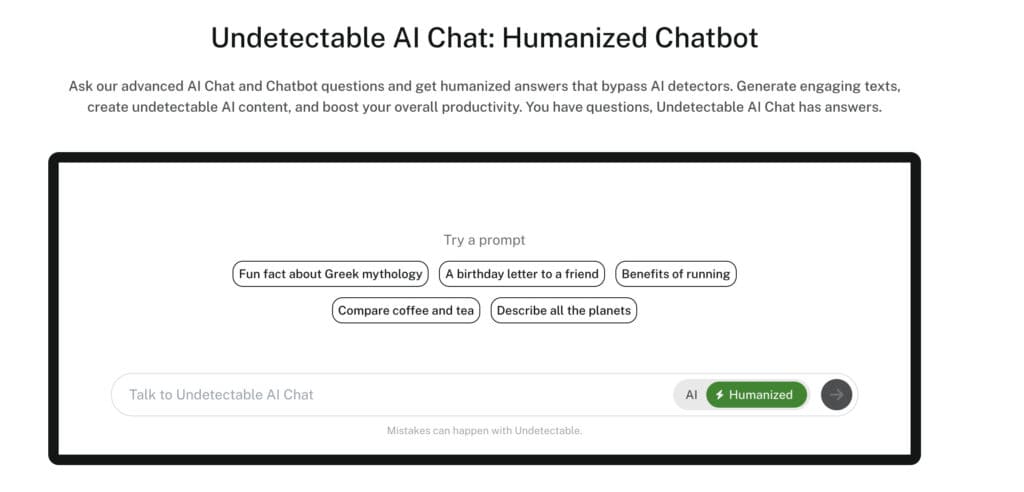
You can try different prompts like:
- What does the metaphor ‘Hope is the thing with feathers’ mean in Emily Dickinson’s poem? What feelings or ideas does the bird represent?
- Break down the metaphor in this quote by Sylvia Plath: ‘I took a deep breath and listened to the old brag of my heart: I am, I am, I am.’
- Compare the metaphor ‘Juliet is the sun’ with another metaphor in Shakespeare. What’s the deeper meaning behind both?
You can also analyze literature-inspired metaphors.
Use these prompts in AI Chat:
- Give me 3 metaphor ideas about heartbreak inspired by Shakespeare’s writing style.
- Write a metaphor about freedom in the style of Toni Morrison.
- Help me write a metaphor that compares curiosity to something natural, like Emily Dickinson might have.
Metaphor Examples for Students
Here are the metaphor examples for different levels of students.
Elementary School
- My stomach is a balloon (means: I feel full).
- He’s a walking dictionary (means: He knows a lot of words).
- The classroom was a zoo (means: It was loud and wild).
Middle School
- Her smile is sunshine (means: It lights up the room).
- Math is a puzzle (means: It takes time to figure out).
- Friendship is glue (means: It holds people together).
High School
- Hope is a candle in the dark (means: Even in tough times, there’s light).
- The internet is a double-edged sword (means: It’s helpful and harmful).
- The past is a shadow (means: It follows us, but it’s behind).
College
- Justice is a blindfolded scale (means: Fairness should be unbiased).
- The brain is a muscle (means: It needs regular use to grow).
- Time is a thief (means: It slips away quickly).
Metaphors vs Similes (Quick Comparison)
Metaphors and similes are like cousins in the world of writing.
They both compare, but they do it in different ways.
- A metaphor says something is something else.
- A simile says something is like something else.
Let’s break this comparison of simile and metaphors:
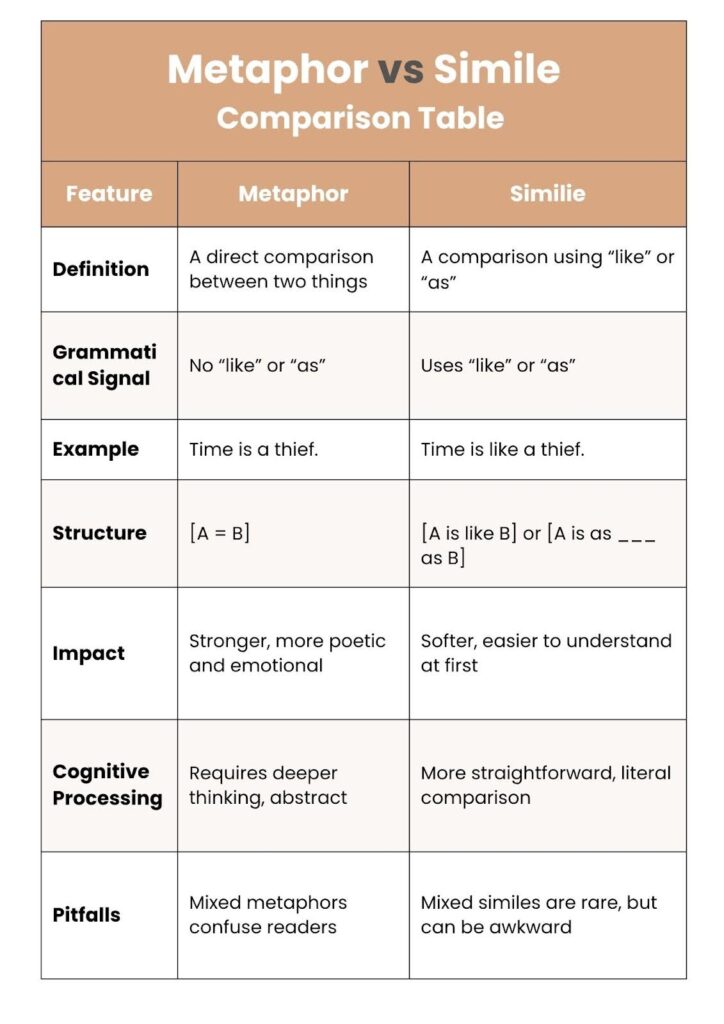
How to Write Better Metaphors
Metaphors work like bridges. They carry meaning from something we know to something we’re trying to explain.
So, if you want to get better at writing them, you need to start by asking:
- What is this thing I want to describe? That’s your target.
- What else in real life feels like this? That’s your source.
The trick is to connect the two in a way that just clicks. This is called the “What it is” formula.
Step 1: Pick the idea or feeling (like stress, fear, or ambition).
Step 2: Think of a physical thing that feels like that.
Step 3: Link them together.
Let’s say you want to explain stress to a 10-year-old.
Bad example: Stress is like an endless spreadsheet.
Better example of metaphor: Stress is like holding a balloon that keeps getting bigger—you don’t know when it will pop.
Now that’s a picture a kid can feel.
Before writing a metaphor, slow down and ask:
- What emotion or idea do I want to show?
- What real-life object or experience feels like that?
- Can the audience understand that object easily?
- Does this metaphor feel fresh, or have they heard it a hundred times?
This is where you take the target (idea/emotion) and map it onto a source (object/situation).
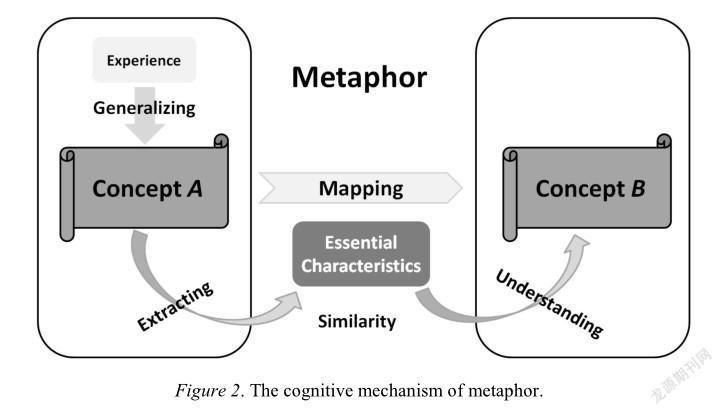
Source = Medium
Example:
- Target: Anxiety
- Source: A phone ringing in a quiet room
- Final Metaphor: Anxiety is like a phone ringing in the dark—you don’t know who’s calling, but you can’t ignore it.
Techniques That Make Metaphors Stronger
- Use your senses. Think of what something smells like, sounds like, or feels like.
- Avoid clichés. “Climbing the ladder” or “a fire in your belly” are used too often. They don’t surprise us anymore.
- Think about your audience. A sports metaphor might work for teens, but not for toddlers.
- Revise and trim. Good metaphors are clear and sharp, not messy or confusing.
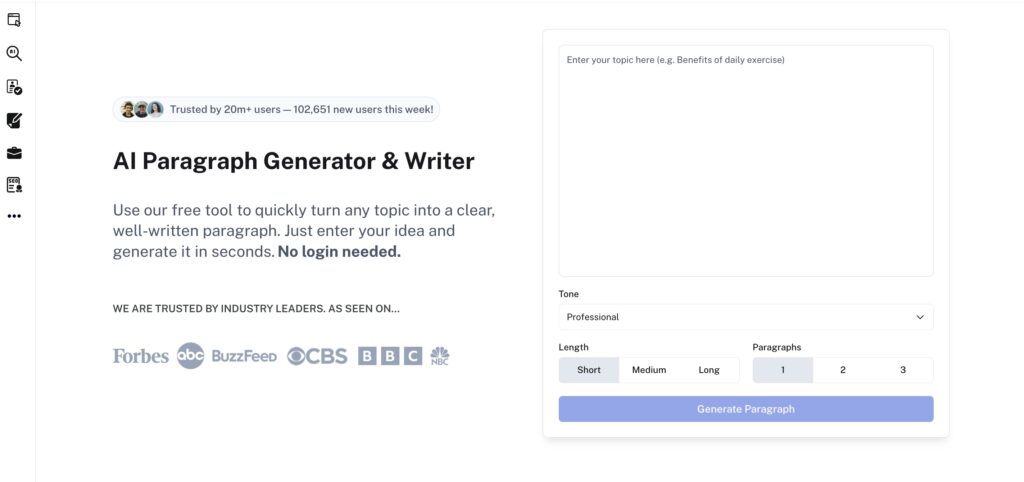
Once you’ve brainstormed your metaphors, practice weaving them naturally into full sentences or short passages.
That’s where Undetectable AI’s AI Paragraph Generator and Writer can really help.
It lets you create sample paragraphs that showcase your metaphors in action—turning abstract comparisons into vivid, readable writing that feels human and expressive.
If you want to take your metaphors a step further and see how they work inside a poem, you can try our Undetectable AI’s Poem Generator.
Just feed it a feeling, image, or central metaphor and it will shape those ideas into poetic lines, helping you explore how your comparisons sound in a more lyrical, metaphor-driven style.
It is a simple way to experiment with turning strong metaphors into full poetic expressions.
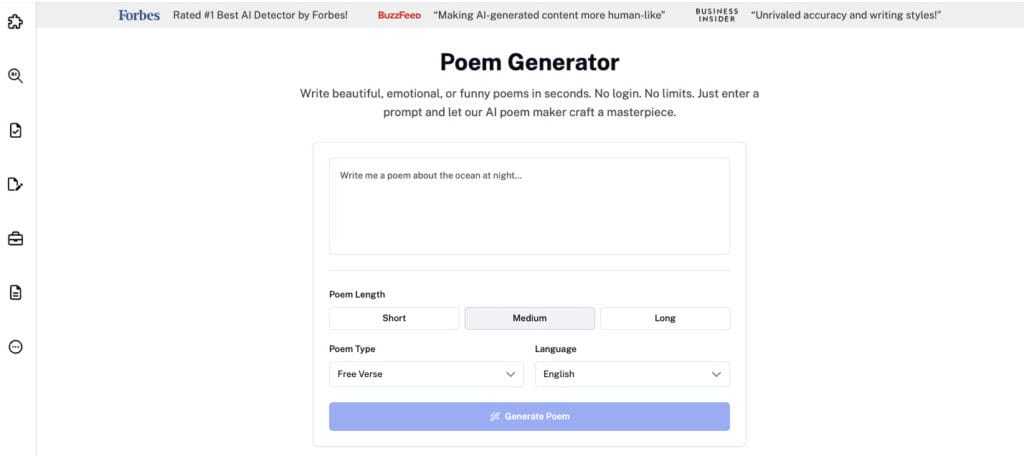
Utilize the widget below to try our AI Detector and Humanizer today!
Final Thoughts
Ever had a moment when someone said something so spot-on, so unexpected—it hit you in the chest? That’s a good metaphor.
A metaphor can do what a thousand explanations can’t.
It turns “I’m overwhelmed” into “I’m drowning in a sea of to-dos.”
Suddenly, people get it. They feel it in their bones. That’s the kind of connection that sticks.
But let’s be real—good metaphors don’t fall from the sky. You’ve got to dig for them.
Ask: What does this emotion taste like? Smell like? Move like? Start there. Don’t reach for “creative.” Reach for true.
When it lands, it makes your reader pause mid-scroll, maybe even whisper “oof” under their breath.
